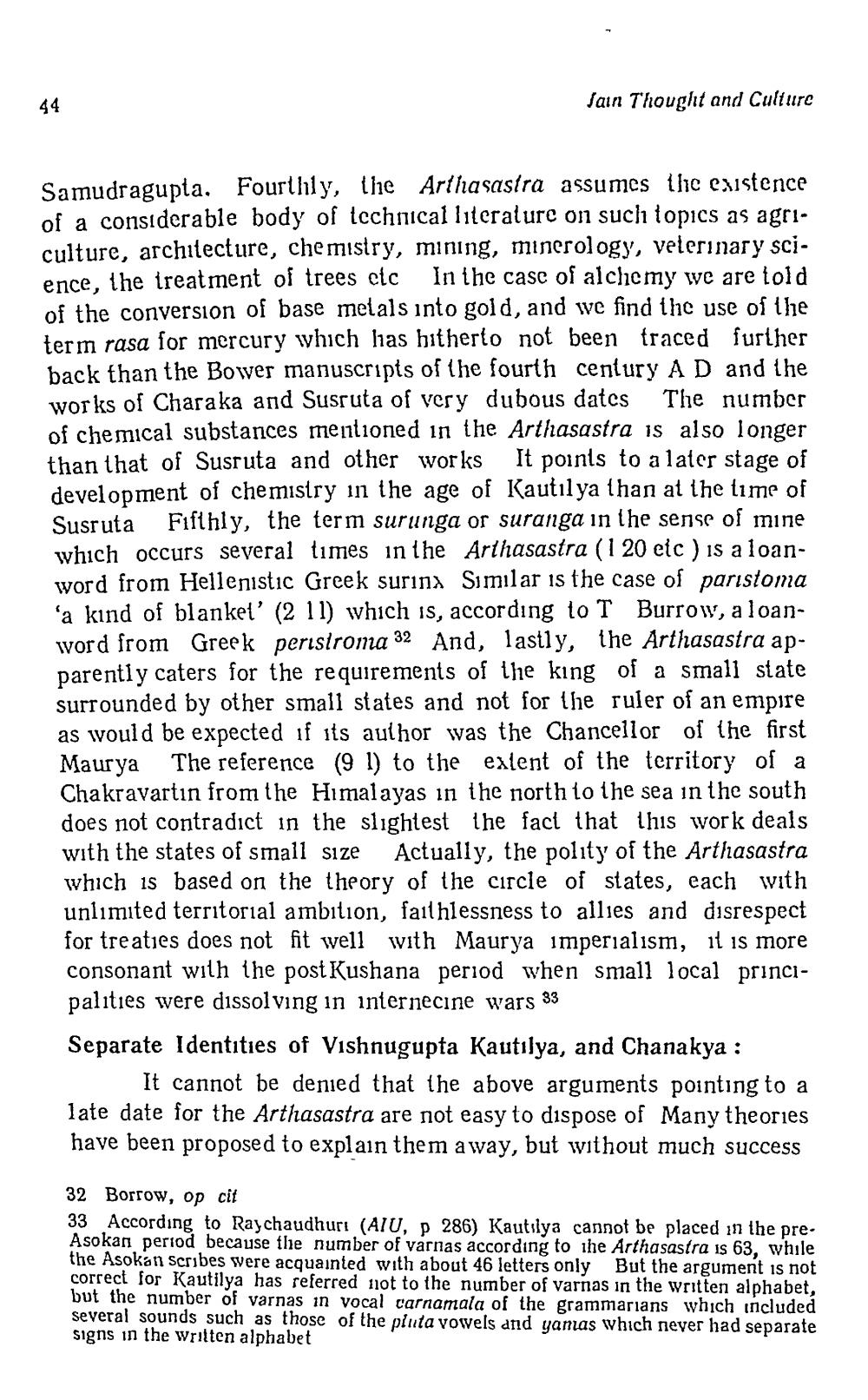________________
-
44
Jain Thought and Culture
Samudragupta. Fourthly, the Arthasastra assumes the existence of a considerable body of technical literature on such topics as agriculture, architecture, chemistry, mining, minerology, veterinary science, the treatment of trees ctc in the case of alchemy we are told of the conversion of base metals into gold, and we find the use of the term rasa for mercury which lias hitherto not been traced further back than the Bower manuscripts of the fourth century AD and the works of Charaka and Susruta of very dubous datcs The number of chemical substances mentioned in the Arthasastra is also longer than that of Susruta and other works It points to a later stage of development of chemistry in the age of Kautilya than at the time of Susruta Fifthly, the term surunga or suranga in the sense of mine which occurs several times in the Arthasastra (1 20 etc ) is a loanword from Hellenistic Greek surinx Similar is the case of paristoma 'a kind of blanket' (211) which is, according to T Burrow, a loanword from Greek peristroma 32 And, lastly, the Arthasastra apparently caters for the requirements of the king of a small state surrounded by other small states and not for the ruler of an empire as would be expected if its author was the Chancellor of the first Maurya The reference (91) to the extent of the territory of a Chakravartin from the Himalayas in the north to the sea in the south does not contradict in the slightest the fact that this work deals with the states of small size Actually, the polity of the Arthasastra which is based on the theory of the circle of states, each with unlimited territorial ambition, faithlessness to allies and disrespect for treaties does not fit well with Maurya imperialism, it is more consonant with the post Kushana period when small local principalities were dissolving in internecine wars 33 Separate Identities of Vishnugupta Kautilya, and Chanakya :
It cannot be denied that the above arguments pointing to a late date for the Arthasastra are not easy to dispose of Many theories have been proposed to explain them away, but without much success
32 Borrow, op cit 33 According to Raychaudhuri (AIU, P 286) Kautilya cannot be placed in the preAsokan period because the number of varnas according to the Arthasastra is 63, while the Asokan Scribes were acquainted with about 46 letters onlyBut the argument is not correct for Kautilya has referred not to the number of varnas in the written alphabet, but the number of varnas in vocal carnamala of the grammarians which included several sounds such as those of the pinta vowels and yamas which never had separate signs in the written alphabet




